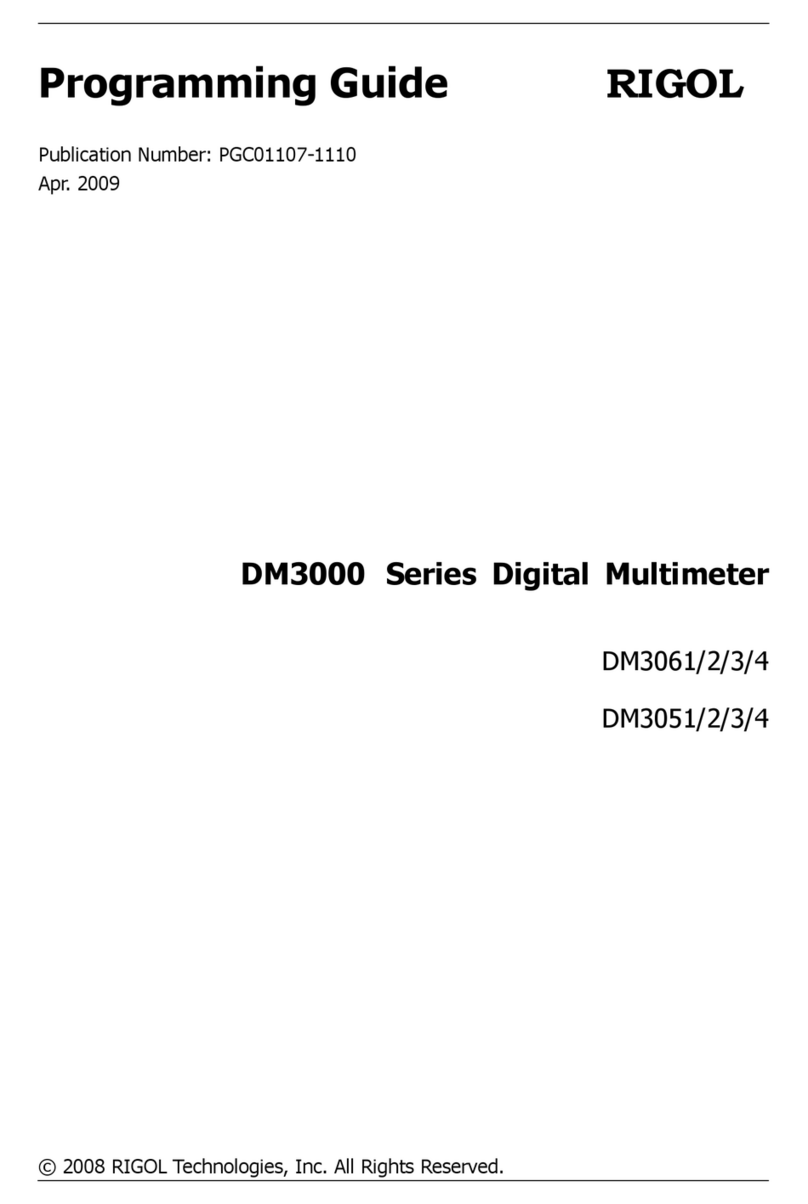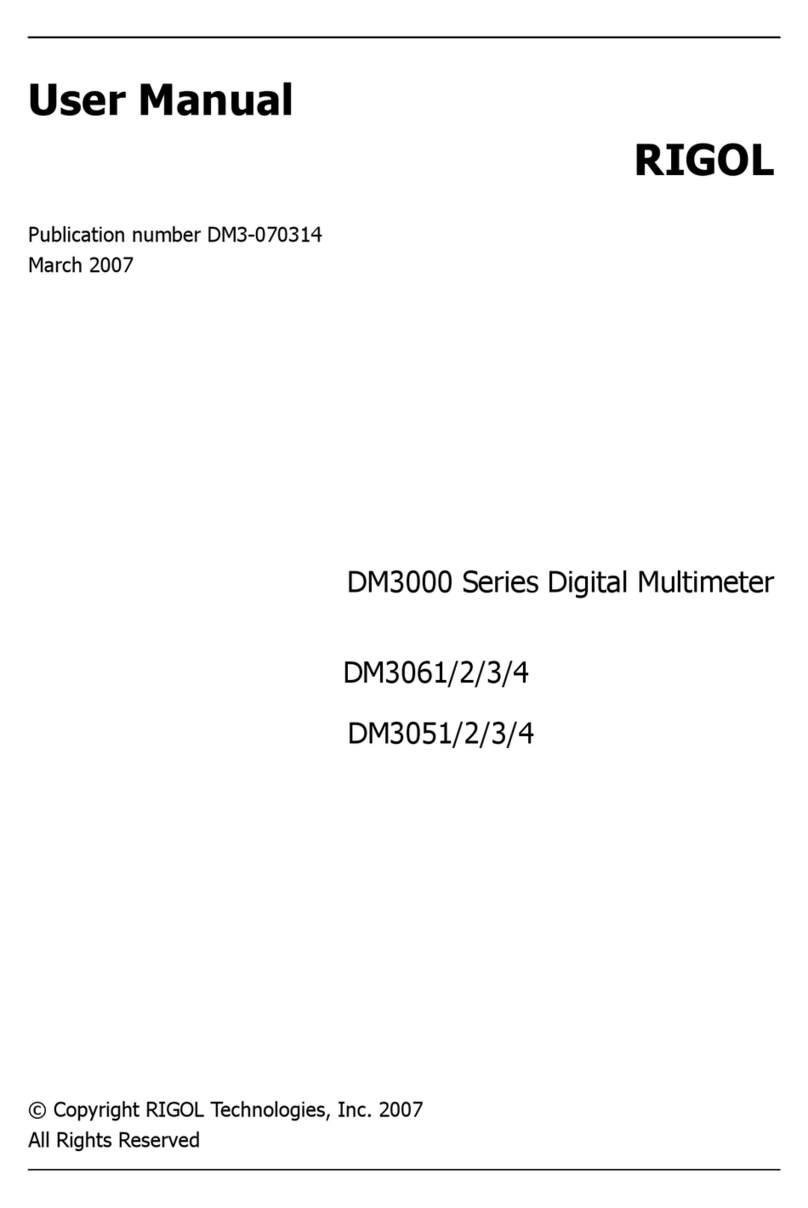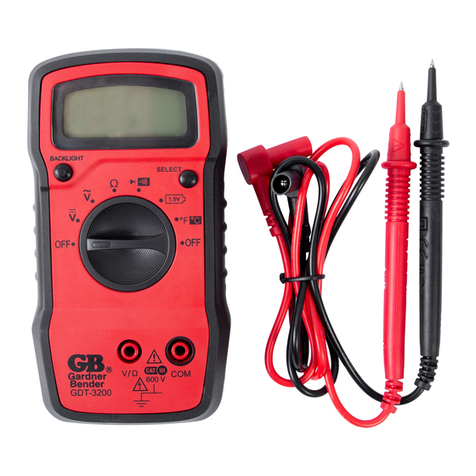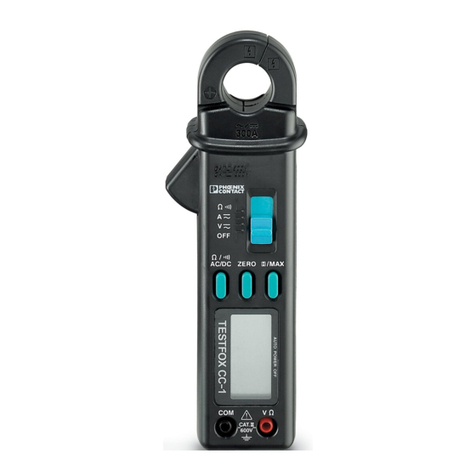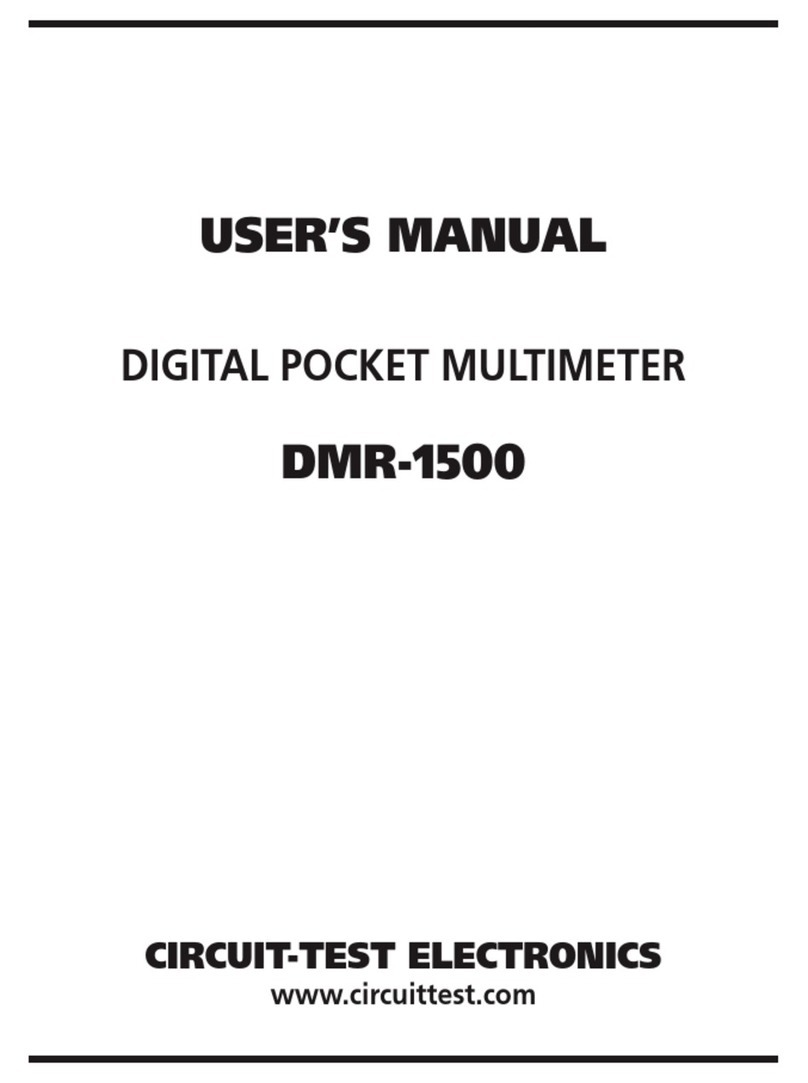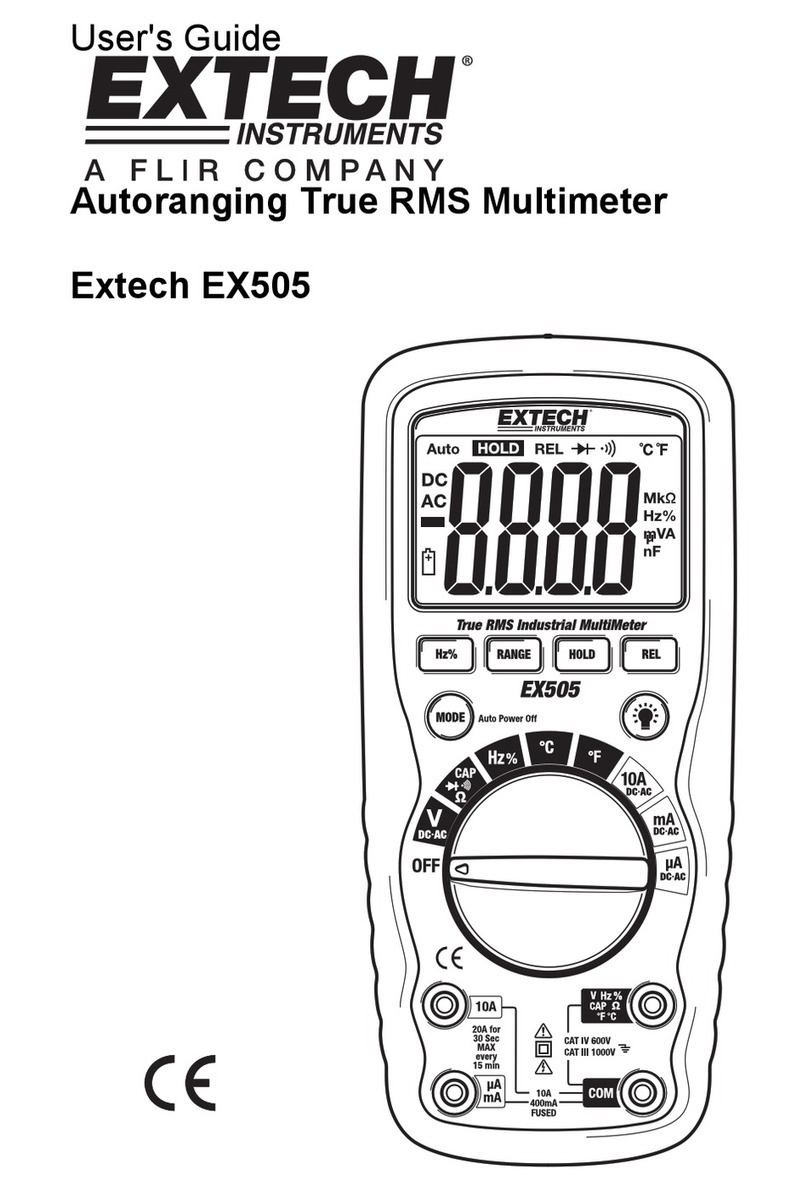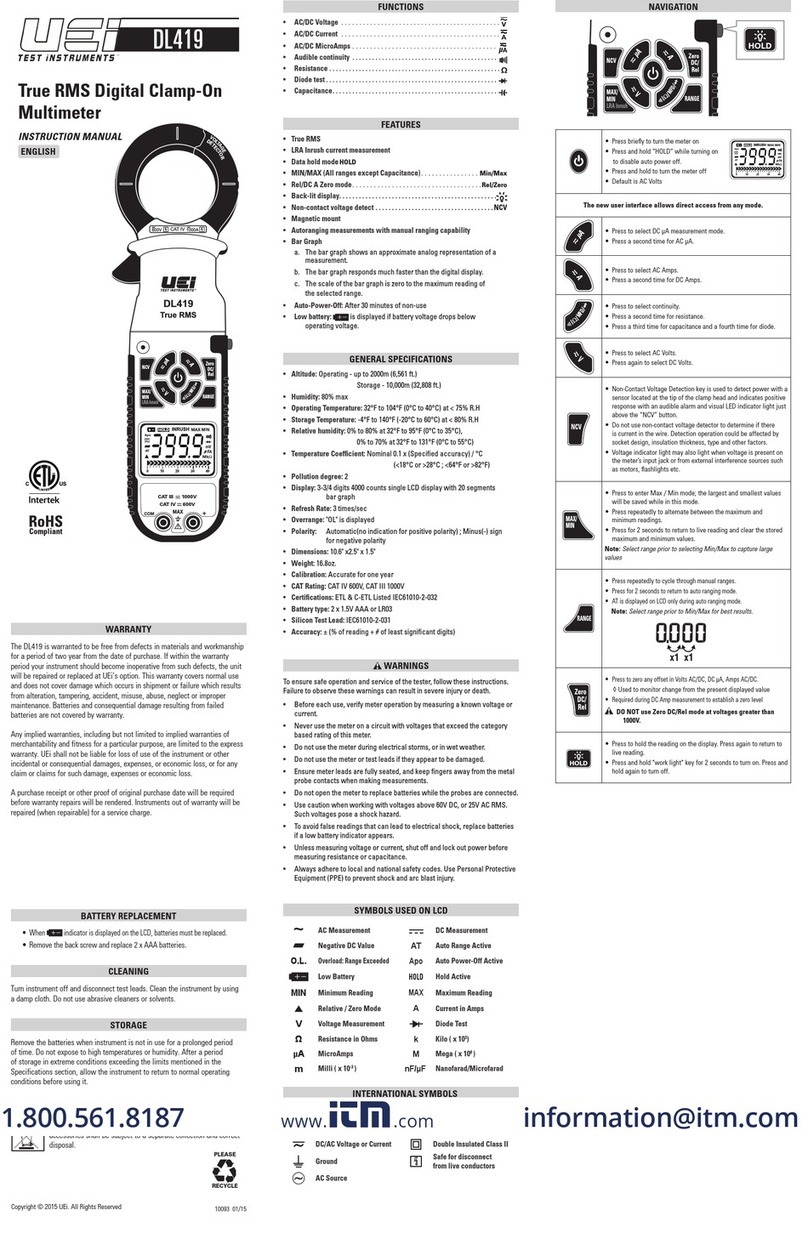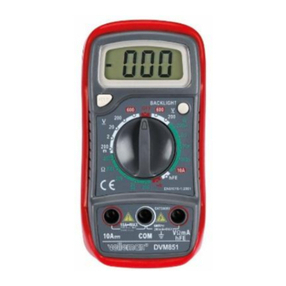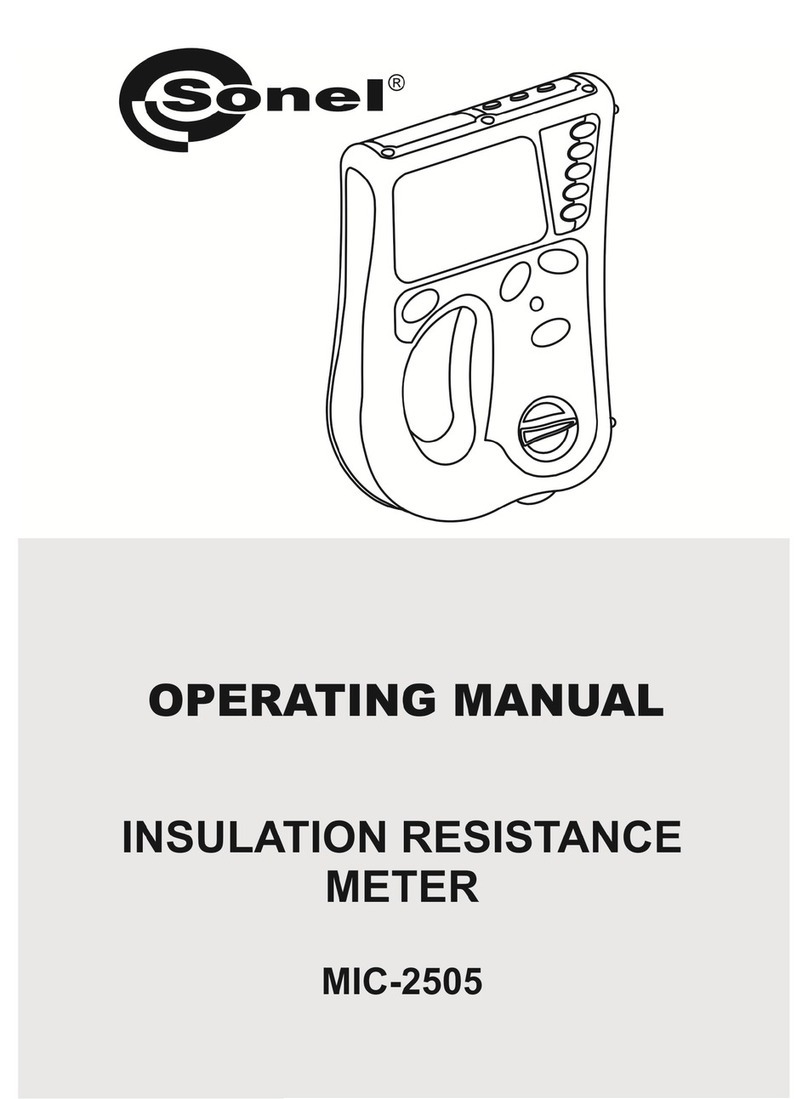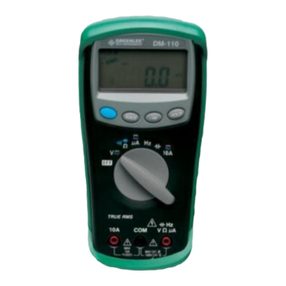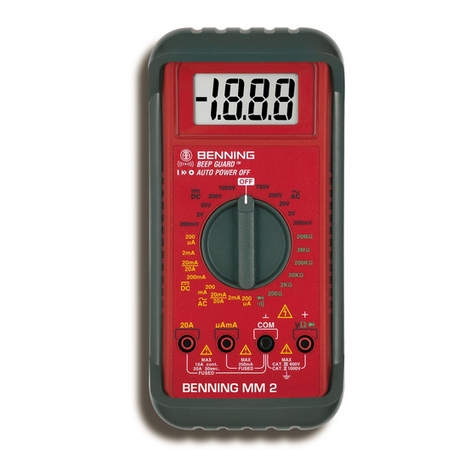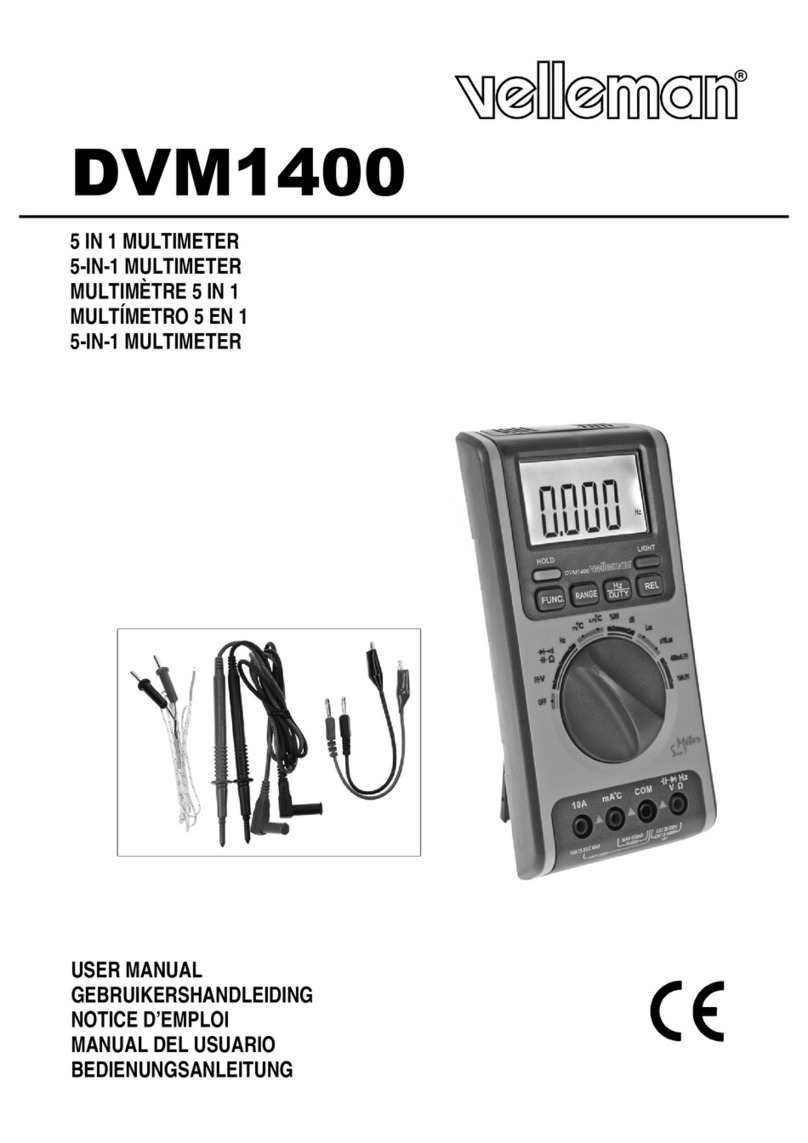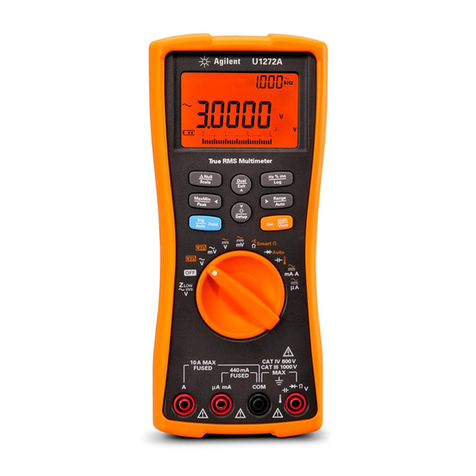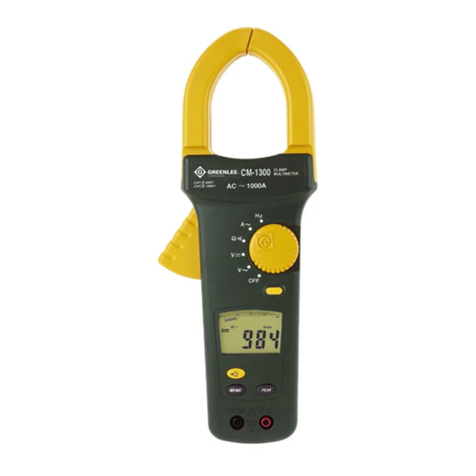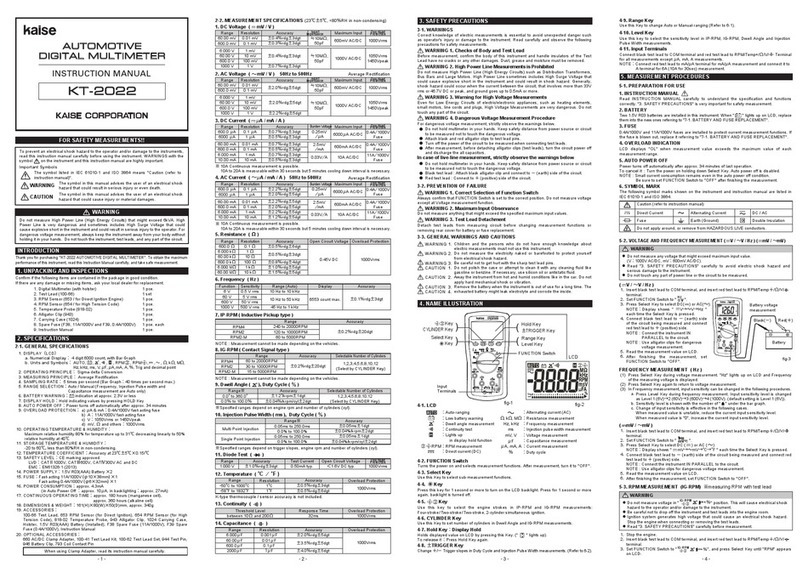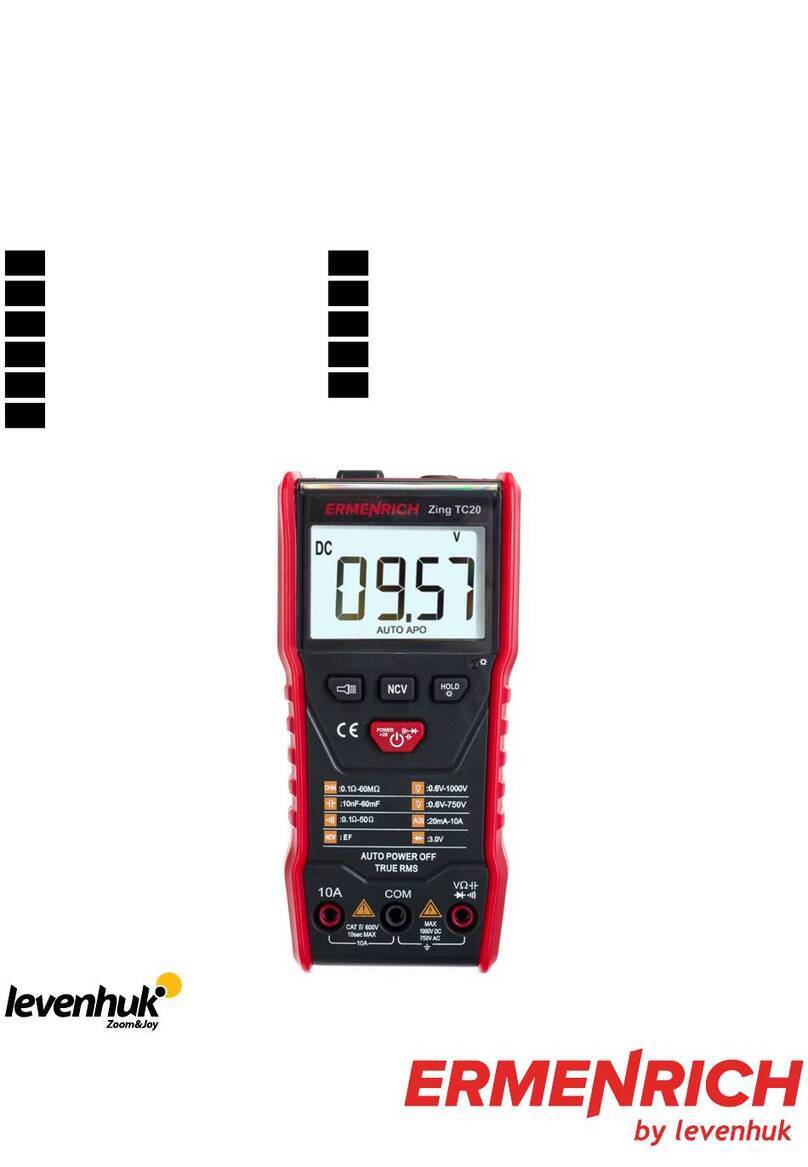Rigol DM3068 Installation and operation manual

RIGOL
Performance Verification Guide
DM3068 Digital Multimeter
Dec. 2014
RIGOL Technologies, Inc.


RIGOL
DM3068 Performance Verification Guide
I
Guaranty and Declaration
Copyright
©2014 RIGOL Technologies, Inc. All Rights Reserved.
Trademark Information
RIGOL is a registered trademark of RIGOL Technologies, Inc.
Publication Number
PVC06100-1110
Notices
RIGOL products are covered by P.R.C. and foreign patents, issued and pending.
RIGOL reserves the right to modify or change parts of or all the specifications and pricing
policies at company’s sole decision.
Information in this publication replaces all previously corresponding material.
Information in this publication is subject to change without notice.
RIGOL shall not be liable for either incidental or consequential losses in connection with the
furnishing, use or performance of this manual as well as any information contained.
Any part of this document is forbidden to be copied, photocopied or rearranged without prior
written approval of RIGOL.
Product Certification
RIGOL guarantees this product conforms to the national and industrial standards in China as well as
the ISO9001:2008 standard and the ISO14001:2004 standard. Other international standard
conformance certification is in progress.
Contact Us
If you have any problem or requirement when using our products or this manual, please contact
RIGOL.
E-mail: service@rigol.com
Website: www.rigol.com

RIGOL
II DM3068 Performance Verification Guide
Safety Requirement
General Safety Summary
Please review the following safety precautions carefully before putting the instrument into operation
so as to avoid any personal injury or damage to the instrument and any product connected to it. To
prevent potential hazards, please use the instrument only specified by this manual.
Use Proper Power Cord.
Only the power cord designed for the instrument and authorized for use within the local country
could be used.
Ground the Instrument.
The instrument is grounded through the Protective Earth lead of the power cord. To avoid electric
shock, it is essential to connect the earth terminal of the power cord to the Protective Earth terminal
before connecting any inputs or outputs.
Connect the Probe Correctly.
If a probe is used, do not connect the ground lead to high voltage since it has isobaric electric
potential as the ground.
Observe All Terminal Ratings.
To avoid fire or shock hazard, observe all ratings and markers on the instrument and check your
manual for more information about ratings before connecting the instrument.
Use Proper Overvoltage Protection.
Make sure that no overvoltage (such as that caused by a thunderstorm) can reach the product, or
else the operator might be exposed to the danger of electrical shock.
Do Not Operate Without Covers.
Do not operate the instrument with covers or panels removed.
Do Not Insert Anything Into the Holes of Fan.
Do not insert anything into the holes of the fan to avoid damaging the instrument.
Use Proper Fuse.
Please use the specified fuses.
Avoid Circuit or Wire Exposure.
Do not touch exposed junctions and components when the unit is powered.

RIGOL
DM3068 Performance Verification Guide
III
Do Not Operate With Suspected Failures.
If you suspect damage occurs to the instrument, have it inspected by RIGOL authorized personnel
before further operations. Any maintenance, adjustment or replacement especially to circuits or
accessories must be performed by RIGOL authorized personnel.
Keep Well Ventilation.
Inadequate ventilation may cause an increase of instrument temperature which would cause damage
to the instrument. So please keep the instrument well ventilated and inspect the intake and fan
regularly.
Do Not Operate in Wet Conditions.
In order to avoid short circuiting to the interior of the device or electric shock, please do not operate
the instrument in a humid environment.
Do Not Operate in an Explosive Atmosphere.
In order to avoid damage to the device or personal injuries, it is important to operate the device away
from an explosive atmosphere.
Keep Product Surfaces Clean and Dry.
To avoid the influence of dust and/or moisture in the air, please keep the surface of the device clean
and dry.
Electrostatic Prevention.
Operate the instrument in an electrostatic discharge protective environment to avoid damage
induced by static discharges. Always ground both the internal and external conductors of cables to
release static before making connections.
Proper Use of Battery.
If a battery is supplied, it must not be exposed to high temperature or in contact with fire. Keep it out
of the reach of children. Improper change of battery (note: lithium battery) may cause explosion. Use
RIGOL specified battery only.
Handling Safety.
Please handle with care during transportation to avoid damage to buttons, knob interfaces and other
parts on the panels.

RIGOL
IV DM3068 Performance Verification Guide
The disturbance tests of all models conform to the P/F values of A based on the standard
of EN 61326: 1997+A1+A2+A3 instead of P/F values of B.
Input Terminal Protection Limit
The protection limits are defined for the input terminals.
1.Main input (HI and LO) terminals
The HI and LO input terminals are used for voltage, resistance, capacitance, continuity,
frequency and diode measurements. Two protection limits are defined for these terminals.
1) HI-LO protection limit: 1000VDC or 750VAC; this is also the maximum measurable voltage.
The limit can be expressed as up to 1000Vpk.
2) LO-ground protection limit: the LO input terminal can safely float to 500Vpk at most relative
to the ground.
Since the protection limit of the HI input terminal is up to 1000Vpk relative to the ground, the
sum of the “floating” voltage and measured voltage cannot exceed 1000Vpk.
2.Sampling (HI Sense and LO Sense/200mA) terminals
The HI Sense and LO Sense/200mA terminals are used for 4-wire resistance measurement.
Two protection limits are defined for these terminals.
1) HI Sense-LO Sense/200mA protection limit: 200Vpk.
2) LO Sense/200mA-LO protection limits: 0.5Vpk. The current input fuse on the rear panel
provides up to 500mA protection limit for the current passing through the LO
Sense/200mA terminal.
3.Current input (10A and Sense/200mA) terminals
The 10A and LO terminals are used for the current measurements of 2A and 10A ranges
respectively. The internal fuse of the multimeter provides 10A protection limit for the current
passing through the 10A terminal. The LO Sense/200mA and LO terminals are used for
current measurements ranging from 200uA to 200mA. The current input fuse on the rear panel
provides up to 500mA protection limit for the current passing through the LO Sense/200mA
terminal.
NOTE:
In order to prevent the fuse from blowing out and protect the multimeter, please
use the current input terminals according to the following requirements.
1) Do not connect the 10A and LO Sense/200mA input terminals to the current
measurement circuit at the same time.
2) Only use the 10A and LO terminals for measurements when the AC+DC RMS value of the
current under measurement is within 200mA and 10A.
3) When making current measurement, select a proper current input terminal according to the
estimated current magnitude before connecting the multimeter to AC power supply.
4) The current input into the 10A terminal cannot exceed 13.5A; otherwise, the internal fuse
of the multimeter will be burned out. The current input into the LO Sense/200mA
terminal cannot exceed 650mA; otherwise, the current input fuse on the rear panel may be
burned out.

RIGOL
DM3068 Performance Verification Guide
V
IEC II Overvoltage Protection
In order to avoid the danger of electric shock, DM3068 provides overvoltage protection for
line-voltage mains connections meeting both of the following conditions.
1.The HI and LO input terminals are connected to the mains under Measurement Category II
conditions defined below.
2.The mains are limited to a maximum line voltage of 300VAC.
WARNING: IEC II includes electrical devices connected to mains through an outlet from the branch
circuit. Such devices include most small appliances, test equipments and other devices inserted into a
branch socket.
DM3068 may be used to make measurements with the HI and LO inputs connected to mains in such
devices (up to 300VAC), or to the branch socket. However, the HI and LO inputs of DM3068 cannot be
connected to mains of permanently installed electrical devices such as a main circuit-breaker panel,
sub-panel disconnected box or wired motors. Voltages beyond the protection limit of DM3068 may
occur on such devices and circuits.
NOTE: Voltages above 300VAC may be measured only in circuits that are isolated from mains.
However, a transient overvoltage is also present in such circuits. DM3068 was designed to safely
withstand occasional transient overvoltage up to 2500Vpk. Do not use this device to measure circuits
whose transient overvoltage may exceed this level.

RIGOL
VI DM3068 Performance Verification Guide
Safety Terms and Symbols
Terms Used in this Manual. These terms may appear in this manual:
WARNING
Warning statements indicate the conditions or practices that could result in injury or loss
of life.
CAUTION
Caution statements indicate the conditions or practices that could result in damage to this
product or other property.
Terms Used on the Product. These terms may appear on the product:
DANGER It calls attention to an operation, if not correctly performed, could result in injury or
hazard immediately.
WARNING
It calls attention to an operation, if not correctly performed, could result in potential
injury or hazard.
CAUTION
It calls attention to an operation, if not correctly performed, could result in damage to
the product or other devices connected to the product.
Symbols Used on the Product. These symbols may appear on the product:
Hazardous
Voltage
Safety
Warning
Protective
Earth
Terminal
Chassis
Ground
Test
Ground

RIGOL
DM3068 Performance Verification Guide
VII
Allgemeine Sicherheits Informationen
Überprüfen Sie diefolgenden Sicherheitshinweise sorgfältigumPersonenschädenoderSchäden am
Gerätundan damit verbundenen weiteren Gerätenzu vermeiden. Zur Vermeidung vonGefahren,
nutzen Sie bitte das Gerät nur so, wiein diesem Handbuchangegeben.
Um Feuer oder Verletzungen zu vermeiden, verwenden Sie ein ordnungsgemäßes
Netzkabel.
Verwenden Sie für dieses Gerät nur das für ihr Land zugelassene und genehmigte Netzkabel.
Erden des Gerätes.
Das Gerät ist durch den Schutzleiter im Netzkabel geerdet. Um Gefahren durch elektrischen Schlag zu
vermeiden, ist es unerlässlich, die Erdung durchzuführen. Erst dann dürfen weitere Ein- oder
Ausgänge verbunden werden.
Anschluss einesTastkopfes.
Die Erdungsklemmen der Sonden sindauf dem gleichen Spannungspegel des Instruments geerdet.
SchließenSie die Erdungsklemmen an keine hohe Spannung an.
Beachten Sie alle Anschlüsse.
Zur Vermeidung von Feuer oder Stromschlag, beachten Sie alle Bemerkungen und Markierungen auf
dem Instrument. Befolgen Sie die Bedienungsanleitung für weitere Informationen, bevor Sie weitere
Anschlüsse an das Instrument legen.
Verwenden Sie einen geeigneten Überspannungsschutz.
Stellen Sie sicher, daß keinerlei Überspannung (wie z.B. durch Gewitter verursacht) das Gerät
erreichen kann. Andernfallsbestehtfür den Anwender die GefahreinesStromschlages.
Nicht ohne Abdeckung einschalten.
Betreiben Sie das Gerät nicht mit entfernten Gehäuse-Abdeckungen.
Betreiben Sie das Gerät nicht geöffnet.
Der Betrieb mit offenen oder entfernten Gehäuseteilen ist nicht zulässig. Nichts in entsprechende
Öffnungen stecken (Lüfter z.B.)
Passende Sicherung verwenden.
Setzen Sie nur die spezifikationsgemäßen Sicherungen ein.
Vermeiden Sie ungeschützte Verbindungen.
Berühren Sie keine unisolierten Verbindungen oder Baugruppen, während das Gerät in Betrieb ist.
Betreiben Sie das Gerät nicht im Fehlerfall.
Wenn Sie am Gerät einen Defekt vermuten, sorgen Sie dafür, bevor Sie das Gerät wieder betreiben,

RIGOL
VIII DM3068 Performance Verification Guide
dass eine Untersuchung durch RIGOL autorisiertem Personal durchgeführt wird. Jedwede Wartung,
Einstellarbeiten oder Austausch von Teilen am Gerät, sowie am Zubehör dürfen nur von RIGOL
autorisiertem Personal durchgeführt werden.
Belüftung sicherstellen.
Unzureichende Belüftung kann zu Temperaturanstiegen und somit zu thermischen Schäden am Gerät
führen. Stellen Sie deswegen die Belüftung sicher und kontrollieren regelmäßig Lüfter und
Belüftungsöffnungen.
Nicht in feuchter Umgebung betreiben.
Zur Vermeidung von Kurzschluß im Geräteinneren und Stromschlag betreiben Sie das Gerät bitte
niemals in feuchter Umgebung.
Nicht in explosiver Atmosphäre betreiben.
Zur Vermeidung von Personen- und Sachschäden ist es unumgänglich, das Gerät ausschließlich
fernab jedweder explosiven Atmosphäre zu betreiben.
Geräteoberflächen sauber und trocken halten.
Um den Einfluß von Staub und Feuchtigkeit aus der Luft auszuschließen, halten Sie bitte die
Geräteoberflächen sauber und trocken.
Schutz gegen elektrostatische Entladung (ESD).
Sorgen Sie für eine elektrostatisch geschützte Umgebung, um somit Schäden und
Funktionsstörungen durch ESD zu vermeiden. Erden Sie vor dem Anschluß immer Innen- und
Außenleiter der Verbindungsleitung, um statische Aufladung zu entladen.
Die richtige Verwendung desAkku.
Wenneine Batterieverwendet wird, vermeiden Sie hohe Temperaturen bzw. Feuer ausgesetzt werden.
Bewahren Sie es außerhalbder Reichweitevon Kindern auf. UnsachgemäßeÄnderung derBatterie
(Anmerkung: Lithium-Batterie) kann zu einer Explosion führen. VerwendenSie nur von RIGOL
angegebenenAkkus.
Sicherer Transport.
Transportieren Sie das Gerät sorgfältig (Verpackung!), um Schäden an Bedienelementen,
Anschlüssen und anderen Teilen zu vermeiden.

RIGOL
DM3068 Performance Verification Guide
IX
Sicherheits Begriffe und Symbole
Begriffe in diesem Guide. Diese Begriffe können in diesem Handbuch auftauchen:
WARNING
Die Kennzeichnung WARNING beschreibt Gefahrenquellen die leibliche Schäden oder den
Tod von Personen zur Folge haben können.
CAUTION
Die Kennzeichnung Caution (Vorsicht) beschreibt Gefahrenquellen die Schäden am Gerät
hervorrufen können.
Begriffe auf dem Produkt. Diese Bedingungen können auf dem Produkt erscheinen:
DANGER weist auf eine Verletzung oder Gefährdung hin, die sofort geschehen kann.
WARNING weist auf eine Verletzung oder Gefährdung hin, die möglicherweise nicht sofort
geschehen.
CAUTION weist auf eine Verletzung oder Gefährdung hin und bedeutet, dass eine mögliche
Beschädigung des Instruments oder anderer Gegenstände auftreten kann.
Symbole auf dem Produkt. Diese Symbole können auf dem Produkt erscheinen:
Gefährliche
Spannung
Sicherheits-
Hinweis Schutz-erde Gehäusemasse Erde

RIGOL
X DM3068 Performance Verification Guide
Document Overview
This manual guides users to correctly test the performance specifications of RIGOL DM3068 digital
multimeter. For the operation method of the instrument, please refer to the corresponding User’s
Guide.
Main contents in this manual:
Chapter 1 Test Overview
This chapter introduces the preparations of the performance verification test.
Chapter 2 Performance Verification Test
This chapter introduces the routine test methods of DM3068 performance verification test.
Appendix Test Record Form
In the appendix, a test record form is provided for recording the test results so as to determine
whether each performance specification fulfills the requirement.

Contents RIGOL
DM3068 Performance Verification Guide
XI
Contents
Guaranty and Declaration................................................................................................ I
Safety Requirement........................................................................................................II
General Safety Summary...................................................................................................II
Safety Terms and Symbols ............................................................................................... VI
Allgemeine Sicherheits Informationen............................................................................... VII
Sicherheits Begriffe und Symbole.......................................................................................IX
Document Overview.........................................................................................................X
Chapter 1 Test Overview ........................................................................................... 1-1
Test Type.......................................................................................................................1-1
Self-Test..................................................................................................................1-1
Quick Test...............................................................................................................1-2
Routine Test............................................................................................................1-3
Test Equipments.............................................................................................................1-3
Test Conditions ..............................................................................................................1-4
Input Connections..........................................................................................................1-5
Test Result Record..........................................................................................................1-5
Specifications.................................................................................................................1-5
Chapter 2 Performance Verification Test................................................................... 2-1
Zero Offset Test .............................................................................................................2-1
Gain Test .......................................................................................................................2-2
Appendix Test Record Form.............................................................................................1
Zero Offset .......................................................................................................................1
DC Gain............................................................................................................................2
AC Voltage Gain................................................................................................................3
AC Current Gain................................................................................................................4
Frequency Gain.................................................................................................................5
Capacitance Gain...............................................................................................................5


Chapter 1 Test Overview RIGOL
DM3068 Performance Verification Guide
1-1
Chapter 1 Test Overview
Test Type
The performance tests are used to check the measurement performance of the multimeter. DM3068
supports self-test, quick test and routine test.
Self-Test
Self-test is a series of internal calibration tests which can be used to reliably determine the usability of
the instrument. The self-test method is as follows.
Step 1: Turn on the multimeter.
Step 2: Press Utility T/C Slftst Run to start the self-test. When abnormal situation
occurs during the test, the beeper sounds. “PASS!” or “FAIL!” is displayed on the screen
when the self-test finishes. If the instrument passes the self-test, it will be assumed that
the hardware of the instrument is working normally (confidence level>90%).
In remote mode, you can use the *TST? command to start the self-test and query its
result. The query returns “0” (the instrument passes the self-test) or “1” (the self-test
fails). The whole self-test process lasts about 18 seconds and appropriate interface
timeout period may need to be configured.
Step 3: The error messages during the self-test are stored in the error queue and you can view
them through pressing Utility T/C Error (or sending the SYSTem:ERRor?
comamnd) after the self-test finishes.
The table below lists the errors which may occur during the self-test.
Table 1-1 List of possible errors
Error Code Error Message
601 ADC offset too noisy
602 ADC fullscale too noisy
603 ADC gain test failed
604 OHM Common Drive Test
605 DCV Common Drive Test
606 DCI Common Drive Test
607 DC 200V Zero Test
608 DC 1000V Zero Test
609 Input Leakage Test
610 Ohms 0.2uA and DC x1 Test
611 DCV Autozero Test

RIGOL Chapter 1 Test Overview
1-2 DM3068 Performance Verification Guide
612 DCI Autozero Test
613 Precharge Offset Test.
614 DC 20V Gain Test
615 AC 200mV Zero Test
616 DC 200V Gain Test
617 DC x10 Gain Test
618 DC 1000V Gain Test
619 Low Current Shunt Test
620 High Current Shunt Test
621 Ohms 2uA Current Source Test
622 Ohms 10uA Current Source Test
623 Ohms 100uA Current Source Test
624 Ohms 1mA Current Source Test
625 AC Gain Test
626 Frequency counter Test
627 Capacitance Function Test
628 FPGA Configuration failed
NOTE
Although the multimeter automatically cuts off the connection with the input signal while
performing self-test, the AC signals from the input terminal may still enter the multimeter and cause
the failure of the self-test. So please do not start the self-test until you have disconnected all the
input connections.
The multimeter that failed the self-test must be repaired and calibrated before it is put back into
use.
Quick Test
Quick test is an easy way to inspect the functions and specifications of the multimeter with higher
confidence level. It contains only a few test points and can evaluate the accuracy of the multimeter in
normal use; however, it cannot detect abnormal element failures.
The quick test procedures are as follows.
Step 1: Run the test.
Step 2:
Execute the test items marked with “Q” (the quick test items) in
“
Chapter 2
Performance Verification Tests”.
NOTE
The quick test is not applicable to the instruments with abnormalities in some certain functions. The
multimeter that fails to pass the quick test must be calibrated or repaired before it is put back into
use.

Chapter 1 Test Overview RIGOL
DM3068 Performance Verification Guide
1-3
Routine Test
It is recommended that you perform routine test when you obtain the multimeter for the first time
and please compare the routine test results with the values of 1 year "Allowable Error Range" in Table
2-1 to Table 2-6 in “Chapter 2 Performance Verification Tests”. After that, you can verify the
performance of the instrument at the end of each calibration interval. It is recommended that you
calibrate the instrument at the end of each calibration interval.
NOTE
The multimeter that passes the routine test must be tested again when the test time interval
expires. The multimeter that fails to pass the routine test must be calibrated or repaired before it is
put back into use.
Test Equipments
Table 1-2 lists the equipments recommended for the test. If you do not have such equipments, use
other equipments that fulfill the "Precision Requirements" in the table.
Table 1-2 Recommended equipments
Items Recommended Equipments Precision Requirements
Zero Offset Test None Pure copper 4-terminal short-circuiter
DC Voltage Fluke 5520A <1/5 of the 24 hour specification of the
instrument
DC Current Fluke 5520A <1/5 of the 24 hour specification of the
instrument
Resistance Fluke 5520A <1/5 of the 24 hour specification of the
instrument
AC Voltage Fluke 5520A <1/5 of the 24 hour specification of the
instrument
AC Current Fluke 5520A <1/5 of the 24 hour specification of the
instrument
Frequency Fluke 5520A <1/5 of the 24 hour specification of the
instrument
Capacitance Fluke 5520A <1/5 of the 24 hour specification of the
instrument

RIGOL Chapter 1 Test Overview
1-4 DM3068 Performance Verification Guide
Test Conditions
For the best performance, all the test processes should fulfill the following recommendations.
1. Always operate the instrument under a proper voltage.
2. Make sure the ambient temperature during the test is stable and within 18°C and 28°C.
3. The relative humidity should be lower than 80%.
4. Warm up the instrument for at least 90 minutes before testing the instrument.
5. Use a copper connector to reduce its thermoelectric potential effect.
6. Use Teflon shielded twisted pair (as short as possible) in order to reduce the effect of external
interference. In the process of capacitance test, a coaxial cable should be used to minimize the
external interference and noise.
7. Ground the shield of the twisted pair and the shield of the coaxial cable. Unless otherwise noted,
ground the LO terminal of the calibrator.
As DM3068 is a high-precision measuring instrument, special attention should be paid to the additional
error caused by the calibration source and calibration operations. In ideal situation, the accuracy of
the verification test and calibration standard source must be at least four times higher than that of the
test instrument.
When performing the gain calibration for DC voltage, DC current and resistance, the “0” output of the
calibrator must be correct. In order to reduce the errors caused by the connecting cables, adequate
warm-up (about 5 minutes) must be done before each reconnection of the cables or short-circuiter.

Chapter 1 Test Overview RIGOL
DM3068 Performance Verification Guide
1-5
Input Connections
To perform zero offset test, you must use a copper/copper alloy low thermoelectric potential
4-terminal short-circuiter. A coaxial cable whose shielding layer is connected to the LO terminal should
be used for capacitance test. For other function verification tests, Teflon shielded twisted pairs (as
short as possible) should be used to connect the multimeter and calibrator. The cables connecting the
HI and LO terminals as well as the HI-Sense and LO-Sense terminals should be twisted together
respectively. Besides, the shielding layers of the cables must be connected to the reference ground.
This kind of connections can reduce the effect of thermoelectric potential and external interference.
Figure 1-1 Input terminals
Test Result Record
Record and keep the test result of each test. In "Appendix Test Record Form" of this manual, a
test result record form which lists all the test items and their corresponding performance limits as
well as spaces for users to record the test results, is provided.
Tip:
It
is recommended that users photocopy the test record form before each test and record the test
results in the copy so that the form can be used repeatedly.
Specifications
The allowable error range of each test item, calculated based on the specification of DM3068, is
provided in chapter 2. For the technical specifications of DM3068, refer to
DM3068 User’s Guide
or
DM3068 Data Sheet
(can be downloaded from www.rigol.com).
HI-Sense
LO-Sense/200mA
HI
LO
10A

Other manuals for DM3068
5
Table of contents
Other Rigol Multimeter manuals
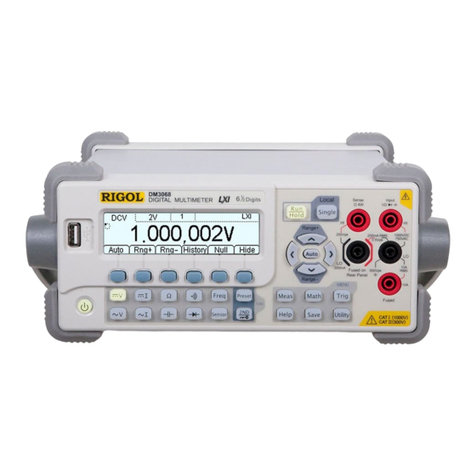
Rigol
Rigol DM3068 User manual

Rigol
Rigol DM3058 User manual
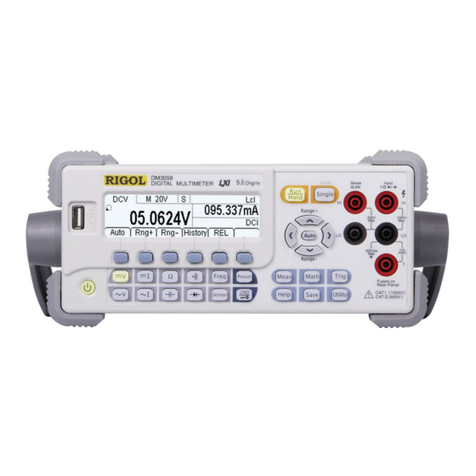
Rigol
Rigol DM3058E User manual
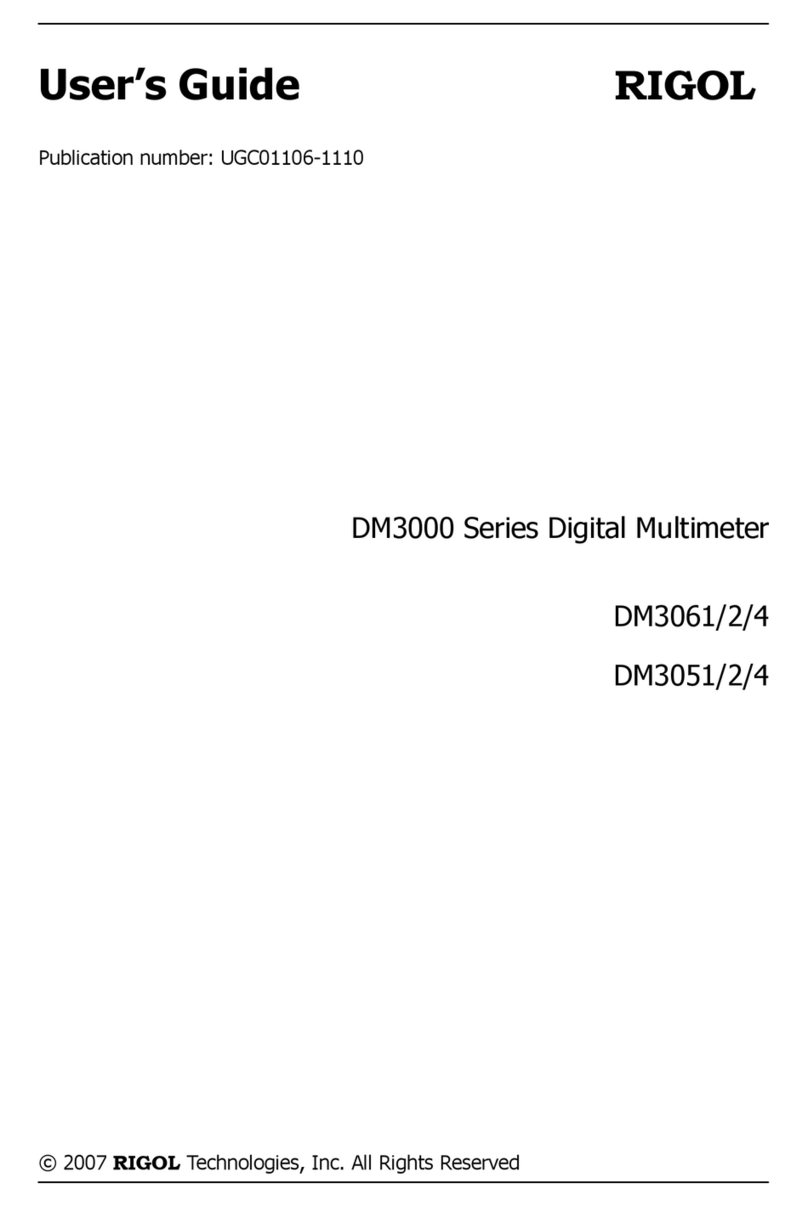
Rigol
Rigol DM3061 User manual
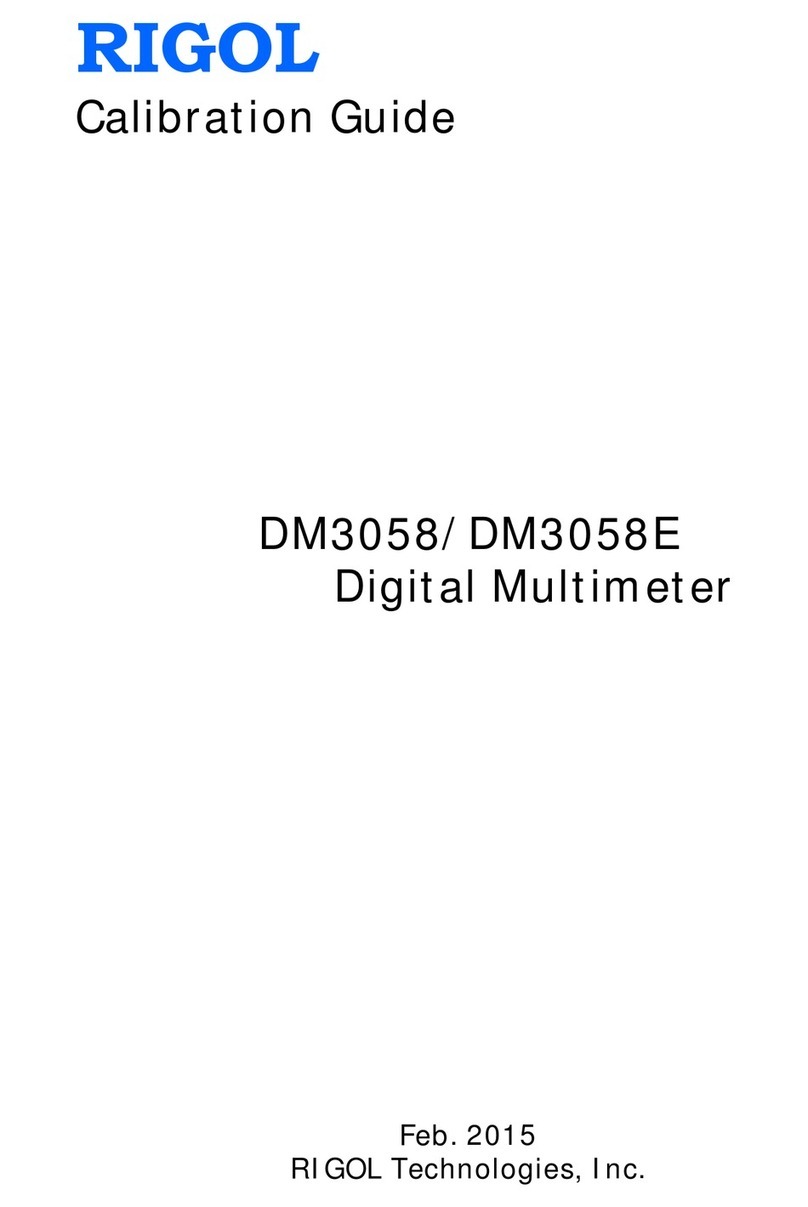
Rigol
Rigol DM3058 Use and care manual

Rigol
Rigol DM3061 User manual

Rigol
Rigol DM3058 Operating instructions
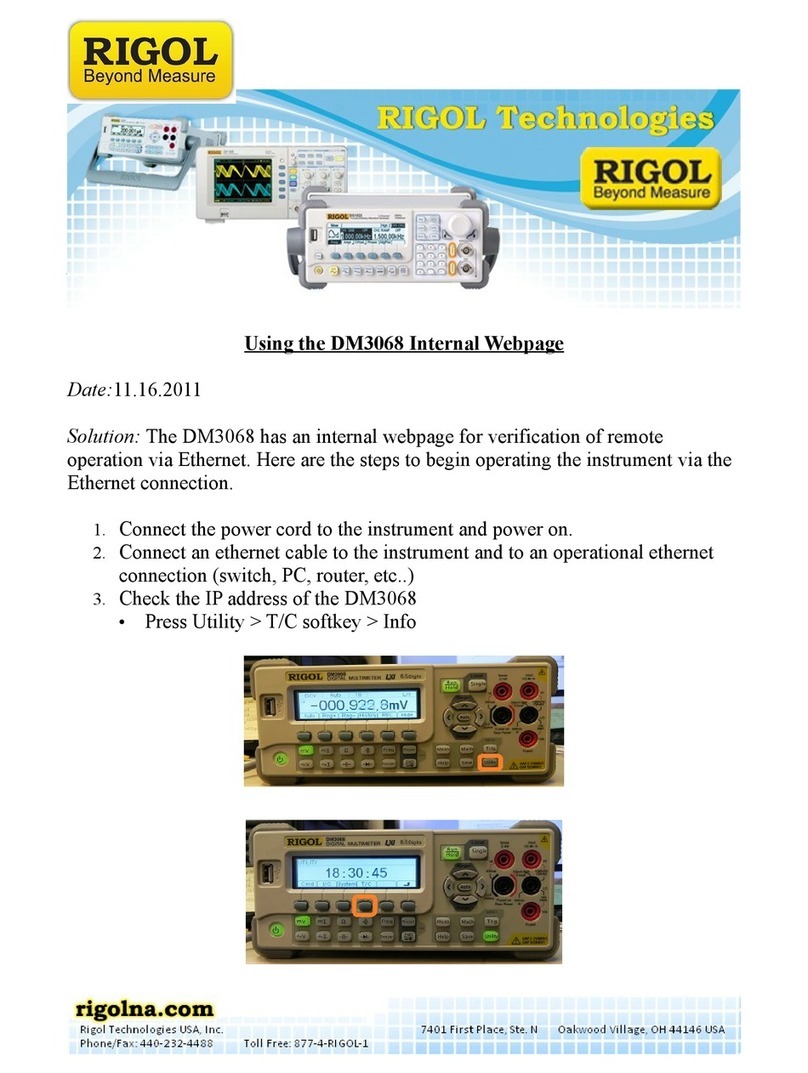
Rigol
Rigol DM3068 User manual
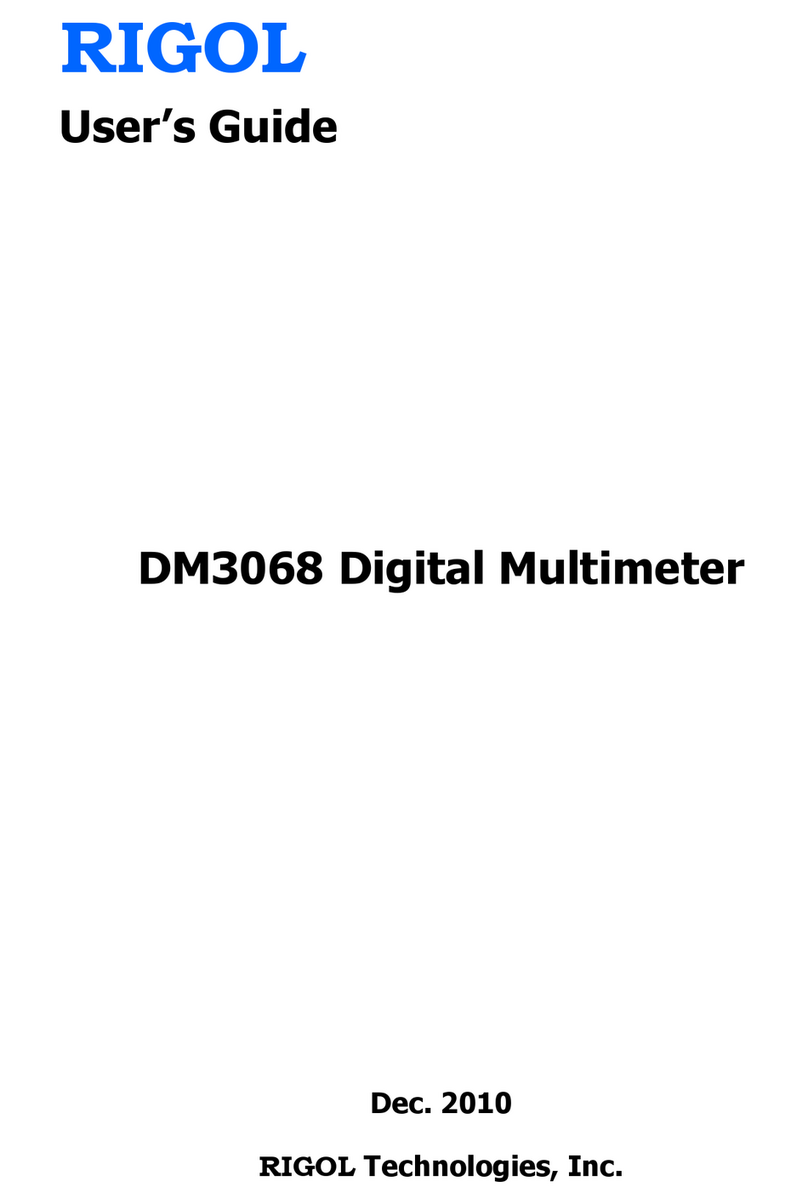
Rigol
Rigol DM3068-OB User manual
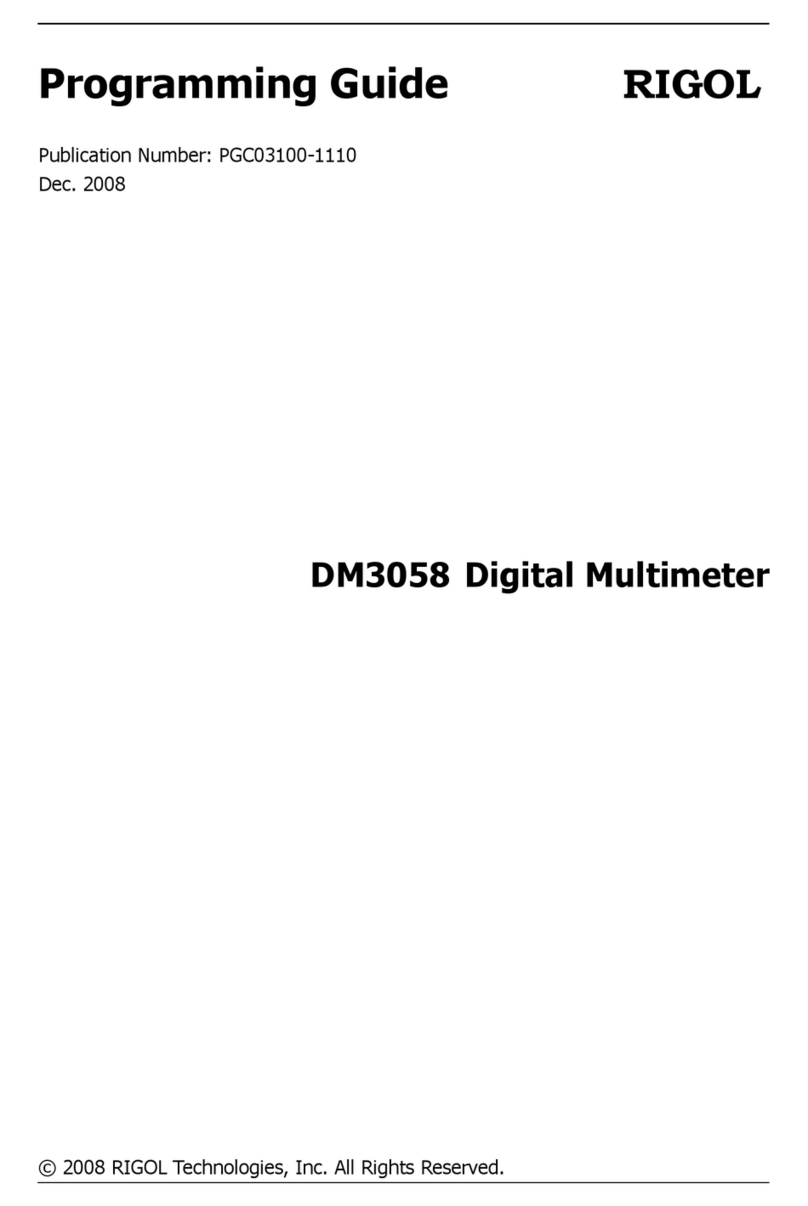
Rigol
Rigol DM3058 Operating instructions

